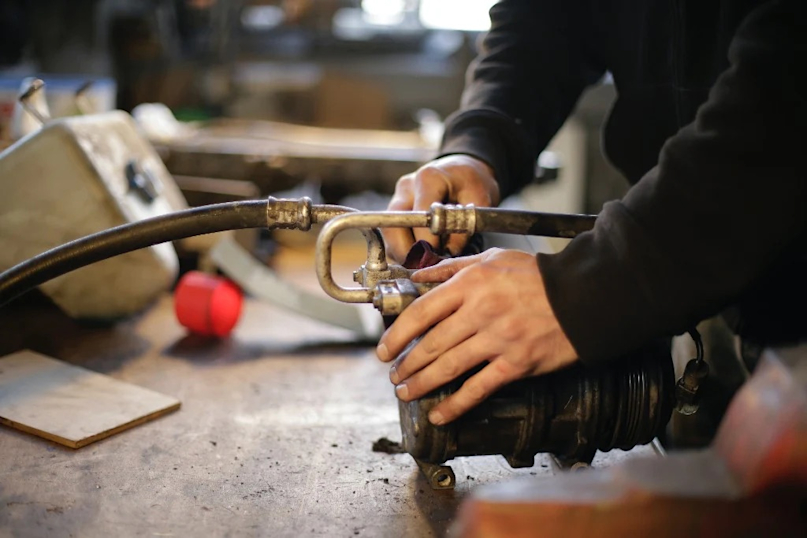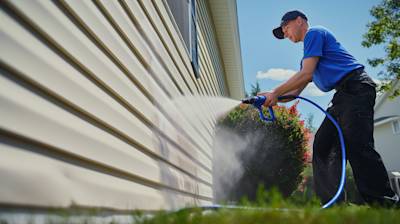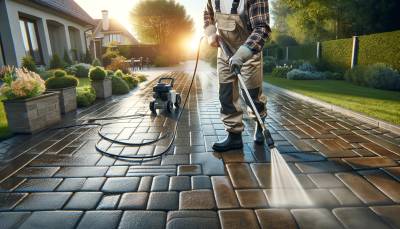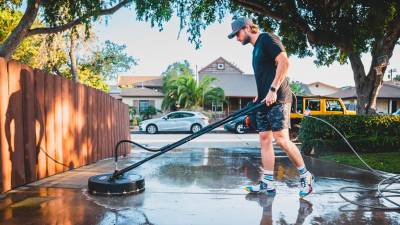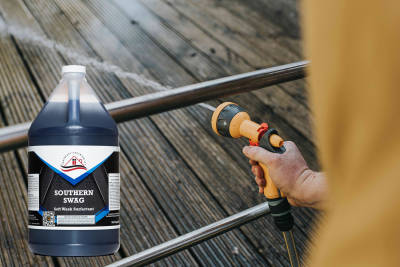Discover the dramatic world of sandblasting, a technique that has been essential for various industries worldwide. This versatile process is not only useful in removing rust and paint but also an important part of preparing surfaces for applications such as coating and painting. With the advent of new technology, sandblasting has become a safer, more efficient process. We are delving deep into different aspects of sandblasting, its uses, and the equipment involved to provide a comprehensive overview for those interested in this fascinating subject.
An Overview of Sandblasting
If you're wondering, "What is sandblasting?" - It's a process that involves propelling small pieces of abrasive material, often sand, at high speed to clean or etch a surface. Originally, sand was the primary material used, leading to the term 'sandblasting'. However, today, other types of materials like steel grit, glass beads, or walnut shells are also commonly used.
Types of Sandblasting
There are various types of sandblasting that serve different purposes depending on the industry and the specific requirements of the project. The common types include:
- Soda blasting
- Dustless blasting
- Glass bead blasting
- Plastic media blasting
Soda Blasting
Soda blasting uses baking soda (bicarbonate of soda) as the blasting media. This method is chosen for its gentle, nondestructive property suitable for delicate surfaces like glass or chrome.
Dustless Blasting
By combining water and abrasive, dustless blasting lessens the dust produced in the process. It is environmentally friendly and more efficient and effective in the removal of coatings, stains, and other materials.
Glass Bead Blasting
This type of blasting utilizes fine glass beads that provide a clean, bright, satin finish. It's ideal for surface treatment of metal items, and it's often used in the automotive industry.
Plastic Media Blasting
Mostly used in the aerospace industry, plastic media blasting employs ground-up plastic stock or corn cobs. It does not damage or affect the integrity of the surface below the coating or paint being removed.
Applications of Sandblasting
The applications of sandblasting are numerous. Predominantly, it is used for cleaning and preparing surfaces for a fresh coat of paint, rust removal, or to restore an aged, worn-out surface back to its original state. Sandblasting is deployed in various industries, such as:
- Manufacturing
- Construction
- Aerospace
- Automotive
- Shipbuilding
Sandblasting Equipment
The primary equipment required for sandblasting includes a sandblasting gun or cabinet and an air compressor that propels the sand at high speed. Other important components include protective gear for the operator, as the process can be dangerous without adequate safety measures.
Sandblasting Gun
A sandblasting gun is a handheld device designed to propel and direct the flow of the abrasive material. It comes in different types and sizes to suit various applications.
Sandblasting Cabinet
The sandblasting cabinet is a closed-loop system that allows for safe and efficient sandblasting operations. It includes a viewing screen for the operator to safely observe the process.
Air Compressor
The air compressor provides the force needed to propel the abrasive material. The power and size of the compressor will depend on the scale and requirements of the sandblasting operation.
Safety Measures in Sandblasting
Safety is paramount in any sandblasting operation. The intense force and abrasive nature of the materials used can cause injuries if not handled correctly. Therefore, operators should always use safety gear such as a helmet, gloves, and protective suit. Additionally, proper ventilation is crucial to prevent harmful dust and particles from accumulating in the workspace.
Understanding sandblasting and all its nuances can enhance its application. This technique plays a significant role in various aspects of construction, manufacturing, and other industries. As new technologies develop within the industry, the potential for sandblasting continues to expand, showing the world just how important 'blasting dirt with sand' really is.
Frequently Asked Questions About Sand Blasting
What are the types of materials used in Sand Blasting?
There are various types of abrasive materials used in Sand Blasting. Some common ones include aluminium oxide, silicon carbide, glass beads, steel grit, and of course, sand. The choice of material largely depends on the nature of the surface that needs to be cleaned or etched.
How does the Sand Blasting process work?
The Sand Blasting process involves propelling a stream of abrasive particles against a surface through a high-pressure system. This is achieved by compressing air or steam that then drives the abrasive material. This process is superb for smoothing, shaping, or cleaning hard surface areas.
Why do we use Sand Blasting?
Sand Blasting is incredibly effective in removing paint, rust, and other surface pollutants from objects. This technique is also used to shape and smooth surfaces in preparation for painting or other coatings. Additionally, Sand Blasting is utilized in carving or sculpting detailed designs onto glass or stone.
When should Sand Blasting be used?
Sand Blasting is most beneficial when you have a surface that needs extensive cleaning, removal of paint or rust, preparing surfaces for coatings, or achieving a uniform texture. This method is commonly used in industries ranging from construction, automotive, to creative arts.
Is Sand Blasting safe?
While Sand Blasting can be safe when carried out correctly and responsibly, there are certain risks associated. Workers exposed to the process must wear appropriate safety gear, including respiratory protection, as the high-speed sand can produce small particles which can be harmful if inhaled or contacted with the skin.
What are the alternatives to Sand Blasting?
There are several alternatives to Sand Blasting that may be better suited to specific situations or materials. Some examples include Soda Blasting, which is milder and can clean delicate surfaces without causing damage. Additionally, Hydro Blasting uses pressurized water and is ideal in situations where dust control is key.
What equipment is needed for Sand Blasting?
The basic equipment needed for Sand Blasting includes a sandblasting machine, an air compressor, blast hose, nozzle, and protective gear. Always ensure the equipment fits the specific requirements of the job and that the personal protective equipment is suitable for the operator's safety.
Can I perform DIY Sand Blasting?
It is possible to perform Sand Blasting on your own, but it's not advisable unless you have the appropriate training and safety equipment. The process can be dangerous if not done correctly, so it's often best left to professionals.
Can all surfaces be Sand Blasted?
Certain materials are not suitable for Sand Blasting due to their delicacy or sensitivity. For instance, thin glass or certain types of plastic may shatter under the high-pressure abrasive. Similarly, wooden surfaces may be deeply etched by Sand Blasting. Always consult with a professional if unsure whether a surface can be Sand Blasted.
How is Sand Blasting different from other abrasive blasting methods?
Sand Blasting differs from other abrasive blasting methods in the material used. While the other methods may use different materials like glass beads, steel grit, or even walnut shells, Sand Blasting, as the name suggests, uses sand as the blasting media. However, the mechanism of operation and desired results are similar across these methods.
Pros and Cons of Sand Blasting
Pros of Sand Blasting
Effective Surface Cleaning and Preparation
- In sand blasting, high-pressure sand particles are used to remove paint, dirt, grime, rust, and scale from surfaces. This makes it one of the most potent cleaning and surface preparation methods available. It can effectively prepare metal surfaces for painting or other types of finishes.
- Sandblasting can reach difficult areas that manual cleaning cannot, such as corners and crevices. This ensures a thoroughly cleaned surface, contributing to better adherence and longevity of the paint or finish applied afterwards.
Fast and Efficient
- Compared to traditional cleaning methods, sand blasting is faster as it blasts away surface impurities quickly. This can drastically reduce the time required for bigger tasks, making it ideal for large-scale operations.
Versatile Application
- Sand blasting can be used on a wide variety of materials, including metal, wood, concrete, and stone. This makes it applicable in a wide variety of industries, including automotive, construction, manufacturing, and maritime.
Cons of Sand Blasting
Environmental Impact
- One of the most significant cons of sand blasting is its impact on the environment. The sand used in blasting can create dust that can be harmful if inhaled.
- The used sand and removed materials from surface cleaning can also cause environmental pollution if not properly disposed of.
Health Risks
- Operators of sand blasting equipment can be exposed to harmful dust particles. Inhaling this dust can lead to serious health issues, including lung disease. Therefore, protection equipment like respirators, eye protection, and full-body suits are necessary when performing sand blasting, which can add to the overall cost and complexity of the operation.
- Noise generated by sand blasting equipment can also potentially harm hearing if proper protection isn't used.
Damage to Surfaces
- While sand blasting is extremely effective in removing impurities, it's also aggressive. If not done properly, sandblasting can damage softer surfaces or thin materials. This may not always be evident right away, but can lead to long-term problems like structural weakness.
Cost
- Sand blasting requires special equipment and protective gear for safety, adding to the overall cost of the cleaning operation. It also requires skilled operators for safe and effective operation. Also, the cost of the sand used in the blasting process can add up, particularly for large-scale operations.
Summary
When you decide to take on a restoration or cleaning project, sand blasting can make a world of difference. This process harnesses the power of compressed air to propel sand at high speeds as a way to clean, etch, smooth, or shape a surface. It's a time saver and is ideal for anyone who wants a high-quality finish, that's superior to any manual method.
Despite the effectiveness of sand blasting, one must take safety seriously. It's essential to wear protective gear such as gloves, masks, and eyewear to prevent any accidents or injuries. In this respect, using professional sand blasting services can be a safer option. Professionals have the knowledge and equipment to handle the process safely and efficiently.
Understandably, sand blasting is an integral part of numerous industries including construction, automotive, and shipping. It provides an efficient way to remove paint, rust or other debris from most surfaces. With its countless advantages, sand blasting is a technique that will continue to be popular for many years to come.
About Grime Busters Pressure Washing
Welcome to Grime Busters Pressure Washing, your trusted source for all your pressure washing needs in Vancouver, WA. We're a locally-owned operation, always ready to roll up our sleeves to eradicate all types of grime from your properties. From decks and driveways to roofs and exteriors, our team of professional cleaners redefines the meaning of squeaky clean. We pride ourselves on delivering top-notch and price-friendly service while prioritizing customer satisfaction. At Grime Busters, we've been keeping Vancouver clean, one surface at a time!
Tags: Sand Blasting, Surface Preparation, Industrial Cleaning,

